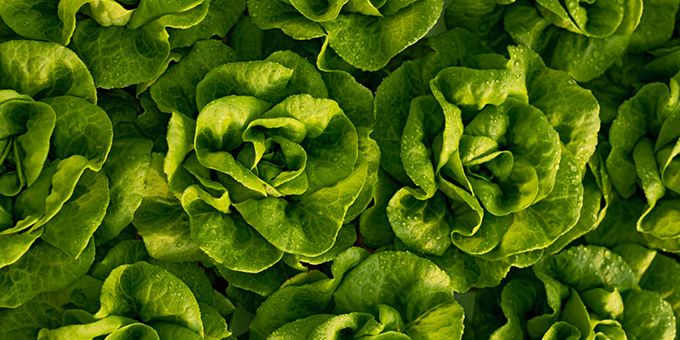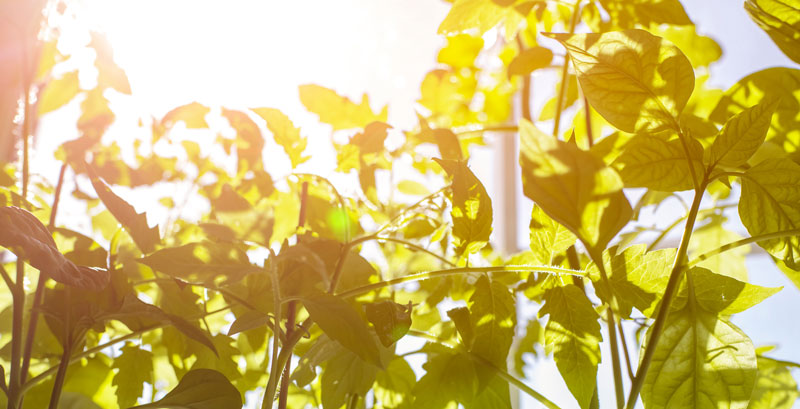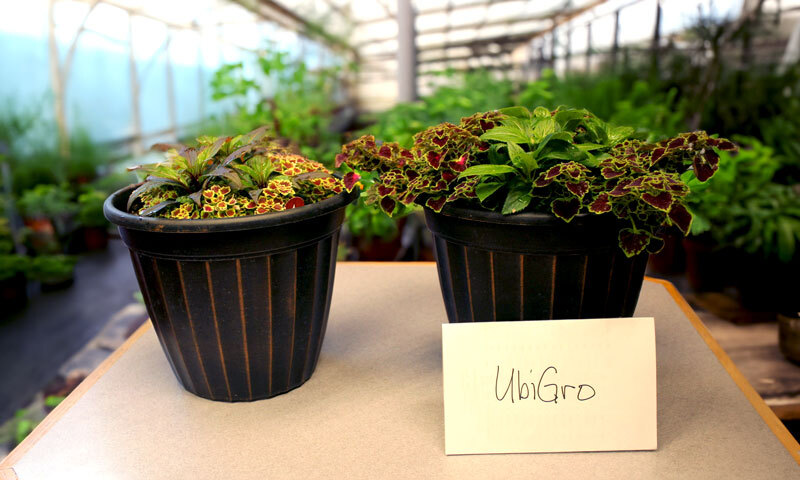The use of supplemental lighting in greenhouse farming has become increasingly popular to increase plant growth and yield and has helped further develop our understanding of how the spectrum of light provided to plants affects plant growth and development.
 The Power of Red Light in Greenhouse Farming
The Power of Red Light in Greenhouse Farming

Article from | UbiGro
The use of supplemental lighting in greenhouse farming has become increasingly popular to increase plant growth and yield and has helped further develop our understanding of how the spectrum of light provided to plants affects plant growth and development. In particular, the use of red light, defined as light with wavelengths 600 – 700 nm, has been shown to have numerous benefits for plant development and production. This blog will focus on three key topics regarding the use of red light in greenhouse farming: 1) how red light improves photosynthetic efficiency, 2) increased light absorption for red photons, and 3) how red light and far-red light interact with phytochrome absorption to control plant morphology, including flowering and fruiting.
How Red Light Improves Photosynthetic Efficiency
Photosynthesis is the process by which plants convert light energy into chemical energy to fuel growth and development. The efficiency of photosynthesis is determined by the amount of light that is absorbed by the plant’s pigments, particularly chlorophyll. The McCree curve (McCree 1976) is a graphical representation of the relationship between photosynthetic rate and light wavelength. It shows that red light is more efficient for photosynthesis than blue light, with the peak efficiency occurring at around 625 nm (Figure 1). Interestingly, green light (500 – 600 nm) is also more efficient than blue light. Coupling its higher photosynthetic efficiency with deeper penetration into the plant canopy, reaching unsaturated leaves lower on the plant, green light plays an active role in biomass production. Check out our blog covering green light for more information.
.png)
Figure 1. The action spectrum developed by McCree showing the relationship between photosynthetic rate and light wavelength. Red and blue curves represent absorption of phytochromes.
The primary reason why red light is more efficient than other colors is that chlorophyll, the primary pigment involved in photosynthesis, has a higher absorption coefficient for red light, meaning that chlorophyll molecules are more effective at capturing and utilizing red light energy to drive photosynthesis compared to other colors. Additionally, red light is less absorbed by other pigments, such as anthocyanin, a pigment that gives plants their red and purple coloration. This means that more red light can penetrate deeper into the plant’s tissues, allowing for greater absorption by chlorophyll.
More recent academic research in photobiology has also shown the importance of red light to plant development, especially crop production. In a study of how spectra affected plant development for a diverse set of crops, eight different light recipes with different blue-to-red light ratios were used to grow seven different plants (tomato, cucumber, radish, pepper, soybean, lettuce, and wheat) in growth chambers and the plant development was characterized (Snowden et al. 2016). While the study focused its discussion on how changing the blue light fraction in the spectra affected plant growth, the fraction of red light was modified in an opposite trend compared to the blue light fraction. When the blue light fraction was low, the fraction of red-light present was high and vice versa, when blue was high, the red-light fraction was lower. The results from the study showed that for all crops, the dry mass gain was highest when the blue light fraction was low, between 11-15%, and the corresponding red-light fraction was over half of the entire spectrum. Therefore, a balance of all colors is needed for optimal plant development, but optimizing for a high fraction of red light and lower fraction of blue light has been shown to improve crop production.

Increased Light Absorption for Red Photons
In addition to its effects on photosynthetic efficiency, red light is also strongly absorbed by chlorophyll, with absorption peaks of 625 nm for chlorophyll B and a peak at 650 nm for chlorophyll A. Where red light is absorbed also makes a difference. Since red light is absorbed strongly by chlorophyll, under direct illumination, red photons are primarily absorbed by the highest leaves in the canopy and thus risk being exposed to excessive light intensity. The photosynthetic efficiency decreases with increasing intensity as the saturated leaves of the plant dissipate excess energy as heat, which is a plant response to avoid oxidative damages under high light (Ruban 2015). Thus, it is important that a light spectrum with a higher red-light fraction is accompanied with light diffusion to better spread the light across the entire plant canopy. To learn more about the importance of light diffusion check, out this blog.
Coupled with lower blue light fractions, red light has specifically been shown to increase leaf area in plants, which can result in an increase in crop yield (Neo et al. 2022). In one study, Cope and Bugbee demonstrated spectra with lower blue-to-red ratios given to plants grown under LEDs resulted in leaf expansion and stem elongation (Cope and Bugbee, 2013). This expansion can lead to an increase in total leaf area, allowing for more surface area for light absorption, suggesting that a higher fraction of red light can have a positive impact on plant growth by increasing light absorption through cell expansion and increased leaf area, thus improving radiation capture.

Red to Far-red Ratio Affects Plant Morphology, Flowering, Fruiting
Phytochromes are a family of photoreceptors that are involved in the perception of light quality and quantity in plants. They are responsible for sensing changes in the local light environment and the time of year, and can also play a role in shade avoidance in plants.
Phytochromes are proteins and exist in two interconvertible forms: Pr and Pfr. Pr is the inactive form and absorbs red light which then converts it to Pfr, the active form, while Pfr absorbs far-red light and is converted to Pr. As the plant absorbs light, the ratio of red to far-red light stabilizes into an equilibrium and can inform the plant about its surrounding environment. For example, because more blue and red light is absorbed by the upper canopy of taller plants, smaller plants that are being shaded by neighboring plants will receive relatively more far-red light, as it is not strongly absorbed by leaves. This creates a low red to far-red ratio, which can trigger shade avoidance responses such as stem and leaf extension (Cerny et al. 2003, Finlayson et al. 2010, Skinner and Simmons 1993), in order to compete for the available light.
Lower red to far-red ratios also have been shown to promote flowering, while higher ratios tend to inhibit flowering. For example, in a study by Cerny in 2003, petunias flowered up to 12 days sooner depending on photoperiod. Red to far-red ratios can be controlled by either adjusting the red or far-red portion of the spectrum, depending on what ratio is required. In tomatoes as well, lower red to far-red ratios have been shown to promote flowering and fruiting (Kalaitzoglou et al. 2019).
Conclusion
In conclusion, red light has numerous benefits for plant growth and production in greenhouse farming. It improves photosynthetic efficiency, increases light absorption, plays an important role in fruiting and flowering, and interacts with phytochromes to affect plant morphology. The McCree curve indicates that red light is the most efficient waveband for photosynthesis, and studies have shown that red light is more efficient than blue light in terms of photosynthesis. Finally, phytochromes interact with red light and far-red light to affect plant morphology, playing a role in shade avoidance and sensing changes in the local light environment and time of year. Given these benefits, red light is arguably the most important waveband of light for efficient crop production. Optimizing the sunlight spectrum to include more red light can greatly benefit greenhouse production by improving plant growth and productivity.
The content & opinions in this article are the author’s and do not necessarily represent the views of AgriTechTomorrow
Comments (0)
This post does not have any comments. Be the first to leave a comment below.
Featured Product

